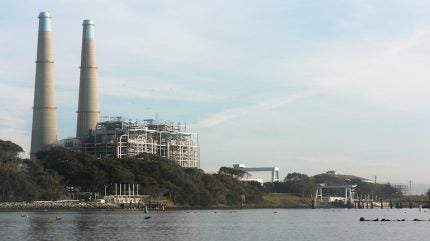
Power company Vistra’s flagship grid battery project, housed in and around the Moss Landing power plant in California, and reputedly the world’s largest grid storage plant, erupted into flames during the evening of Thursday 16 January and prompted nearby residents to evacuate the area, which is on the Pacific Coast Highway north of Monterey Bay.
The cause of the fire is not known, but local authorities have reported that much of the building that housed the batteries was destroyed by the next morning. It is by far the most destructive of the four battery fires that have broken out in the town since it became a major component in California’s clean energy overhaul. Such a destructive fire complicates the energy storage industry’s efforts to win community support for more large batteries. After local officials advised residents to evacuate, some 1200 people drove out of the area, and some roads were closed
Moss Landing became California’s showpiece for the state’s new battery storage policy, due to its strategic proximity to the Bay Area, which has a high electricity demand. Vistra installed a 300 MW/1200 MWh at the site in 2020, the largest project of its kind at that time. Vistra later added phase two, with a 100 MW/400 MWh facility, and subsequently expanded the facility again, in 2023, to a total of 750MW/3000 MWh. For all three phases, the company used NMC batteries manufactured by South Korea’s LG Energy Solution.
But Moss Landing suffered two fires in 2021 that shut it down for months. This latest fire, at the building on Vistra’s property, did far more damage than any of the previous fires. This facility did not use containerised enclosures, but instead repurposed the plant’s historic turbine hall as the home for rows of batteries. The resulting combustion has destroyed most of the structure, say local authorities.
The disaster also represents a setback for the method of clustering batteries in a building enclosure instead of in modular containers, a common architecture for grid batteries.




